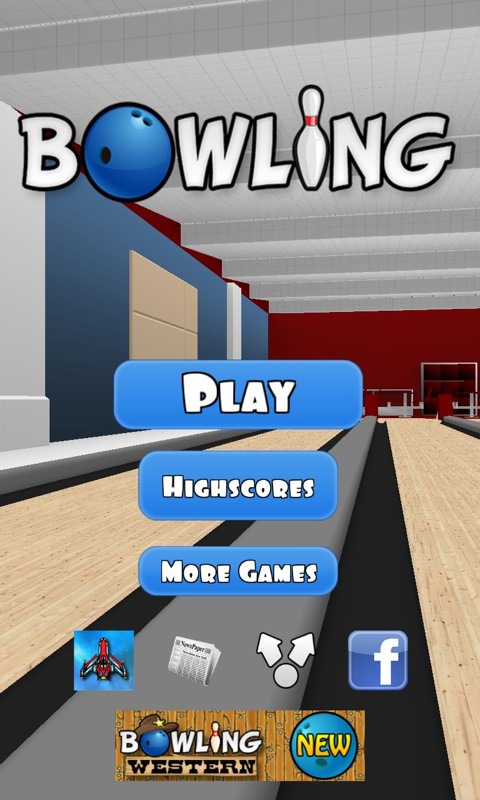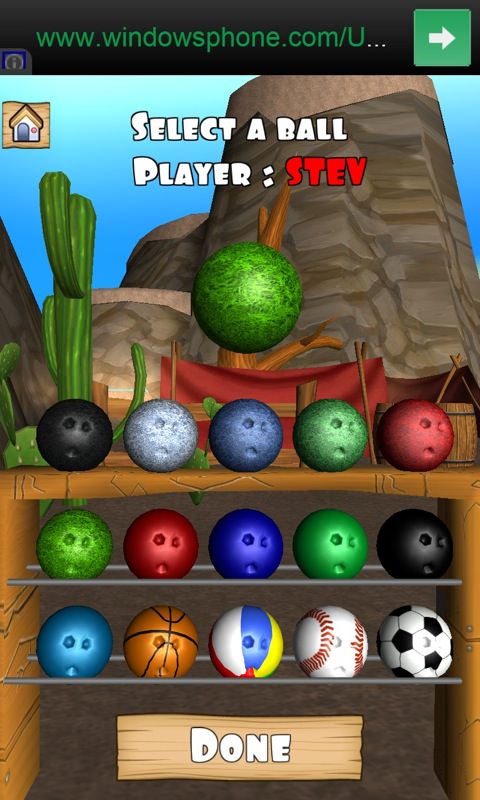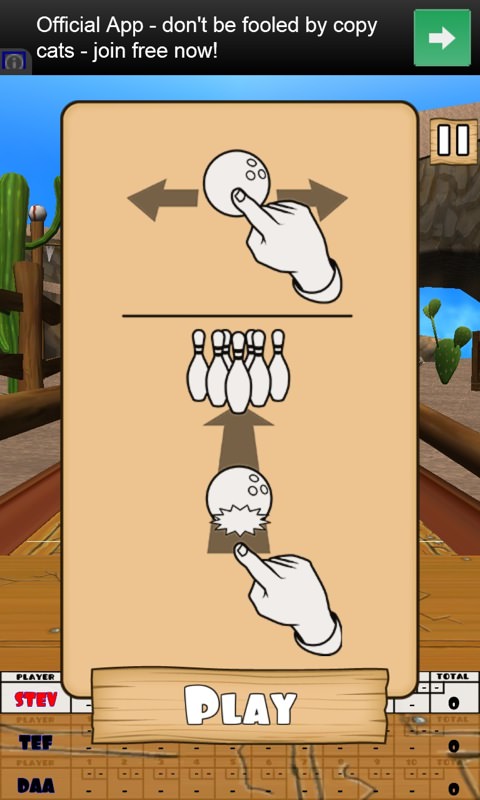First up is the original, Bowling 3D, with bright graphics and accurate physics. You can position the ball in the lane with touch and then your swipe length and direction upwards determines what happens to the ball:




It's a well implemented game, with perfect rolling, bouncing and collision physics, though do note that there's no way to swerve the ball - a tap or tilt system to affect the ball's straight line in some way would have made these titles perfect.
You can download Bowling 3D here - there are no ads in my screenshots because I think I grabbed this as a commercial title before it went ad-supported.
Also available and essentially the same game is Bowling Western - as the name suggests, you're playing in a Wild West bowling alley, complete with wooden textures and appropriate atmospherics, including some (Unity-driven) desert mist swirling over the lane!




Both games support up to four players, in 'pass around' mode, in case you're travelling (or waiting) with some companions. Both games also feature prominent links to the developer's other titles and social presence, but this is fair enough, given the free download status.
You can grab Bowling Western here in the Store.
Interestingly, I spotted an interview with the developers from back in March, with a salient quote:
You were a Microsoft MVP for several years. You then left Windows for Android. Now you’re back on Windows. Tell us more about your experiences.
I was a .NET MVP for six years. I’ve been a user and a fan since Windows Mobile began, and I always owned the latest Pocket PC. When it came to game development, though, I found limited opportunities compared to Android back in 2009. I continued to develop basic tools for Windows, but business-wise, my studio shifted to Android. Then in 2012, I discovered Unity 3D. I quickly saw the potential and especially loved the ability to deploy the same game on multiple platforms, including iOS. I quickly developed my first game on Unity, and we validated the Unity utility and then switched completely.
Now with Unity 4.2, we deploy our games on Windows Phone. The transition was easy, and business-wise, it is the right time to be on Windows Phone. We do very little to actively market the games on Windows Phone, and yet our extraordinary download rate means Windows Phone enjoys high user confidence. We’ve been so thrilled, we’ve released a game every week and plan to continue to do so for the next several months.
It’s definitely good to have you back and actively engaged on our platform. Tell us about the process of using Unity to port your games to Windows.
Unity makes porting fast and easy. I build my project with Unity and make adjustments in the Visual Studio project. We test our game on many devices, and if all is fine, I submit it to the store. For a .NET developer like me, it is easy to build our own plugins.
Tell us about your gameplay strategy...
...We build "casual" or “waiting room” games. Our games require thought and offer many hours of play because they consist of hundreds, if not thousands, of levels. In Burger, players can advance through more than 300 levels and earn 40 different achievements. We wanted to create something casual yet engaging. Our best ideas come from everyone—developers and designers—and often when we least expect them; it’s part of the creative process.
Nice strategy, I approve! It's great to have both casual games and more in-depth 'do not disturb' titles on the platform.
